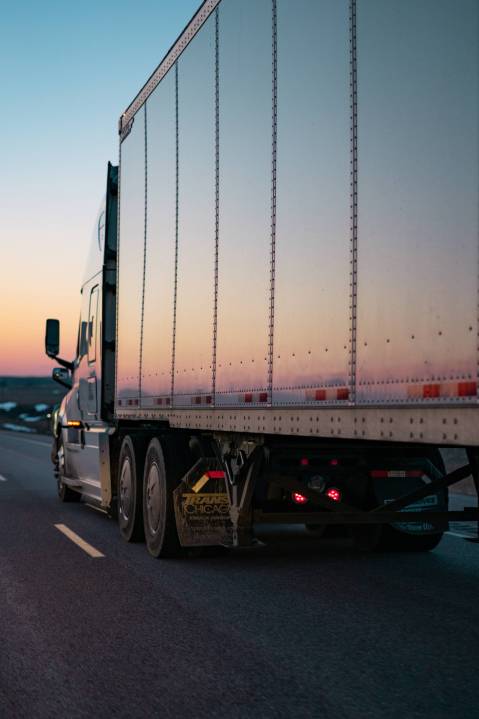The market leader in autonomous vehicles, Waymo, is switching gears from autonomous trucks to the ride-hailing industry. Having spent the prior six years conducting tests with Class 8 trucks, the company has finally made this decision. CEOs Dmitri Dolgov and Tekedra Mawakana of Waymo recently wrote a blog post in which they discussed the commercial opportunities and significant business growth they have seen in the ride-hailing industry. In this piece, we’ll look at Waymo’s history in the trucking industry, how the company has evolved, and what this new direction means for the company.
In 2017, Waymo began conducting trials in Arizona and California of its autonomous vehicle technology in trucks. The following year, a test program using autonomous trucks to deliver supplies to Google data centers was initiated in Atlanta. In 2019, Waymo’s trucking program took off with the company’s expansion into Arizona and, later, Texas. Waymo has strengthened its position in the trucking industry by hiring Boris Sofman and his team to head engineering in the company’s autonomous trucking division. Sofman is the co-founder and former CEO of robotics startup Anki.
Waymo has decided to shift its focus from the trucking industry, where it has made significant strides, to the ride-hailing industry, where it sees enormous momentum and commercial opportunities. The company plans to use its cutting-edge AI/ML technology to respond to the rising demand for rides in major cities like San Francisco, Phoenix, and Los Angeles. As a result, Waymo will delay the majority of the technical development in its trucking division and scale back on its commercial and operational efforts. Waymo plans to keep using its autonomous vehicle system for trucking, but the company hasn’t said when the program will be renewed or when it will go commercial.
Waymo has reorganized its staff substantially as a result of its decision to focus on the ride-hailing industry. The majority of the trucking team’s members have moved on to other departments within the company to aid in the program’s wind down. Waymo is dedicated to helping its employees through this transition, and although the exact number of people affected is unknown, the company stands by that promise.
Waymo and Daimler Truck North America will continue working together to build an autonomous truck platform, albeit at a more leisurely pace. Waymo plans to keep pouring resources into the collaboration, especially toward creating a redundant chassis essential to the secure rollout of autonomous trucks. Waymo plans to continue its preliminary testing of autonomous trucks in the near future.
Waymo’s partnership with Daimler Truck North America is still active, but its partnerships with UPS and J.B. Hunt, both of which were involved in the trucking program, have ended. Waymo is currently considering future plans for the nine-acre trucking hub it plans to construct in Dallas by 2021. Given its new emphasis on ridesharing, the company will evaluate the facility and decide what’s best for it.
Waymo’s logistics division, Waymo Via, has been up and running alongside its trucking efforts, with a primary focus on the delivery of goods via self-driving trucks and other autonomous vehicles. Partnerships with Uber Freight, UPS, J.B. Hunt, and Ryder were among the first formed by Waymo Via. The goal of these partnerships was to use Waymo’s autonomous technology to revolutionize the logistics and freight transportation sectors.
Waymo One, the company’s ride-hailing service, is now available in Phoenix and its suburbs like Scottsdale and Tempe. In May of 2023, the service area doubled in size after years of steady growth. While waiting for the final permit from the California Public Utilities Commission to charge passengers, Waymo also offers ride-hailing services in San Francisco.
In conclusion, Waymo’s decision to pivot from developing autonomous trucks to focusing on the ridesharing market is a response to the substantial commercial opportunities and rider demand that have been observed in the ridesharing market. While Waymo has decided to temporarily halt its trucking program, the company is still dedicated to eventually bringing its autonomous vehicle system to the trucking industry. The company will keep working with Daimler Truck North America, albeit at a reduced rate, and will keep conducting some truck tests. Waymo’s shift exemplifies its ability to pivot and make strategic decisions in the dynamic autonomous vehicle industry.
First reported on TechCrunch
Frequently Asked Questions
1. What has been Waymo’s history in the trucking industry?
Waymo began conducting trials of its autonomous vehicle technology in trucks in 2017 and expanded its trucking program to Arizona and Texas in subsequent years. The company made significant progress in the trucking industry, including a test program delivering supplies to Google data centers in Atlanta.
2. Why did Waymo decide to shift its focus to the ride-hailing industry?
Waymo sees substantial commercial opportunities and rider demand in the ride-hailing market. As a result, the company plans to use its advanced AI/ML technology to meet the rising demand for rides in major cities like San Francisco, Phoenix, and Los Angeles.
3. How will Waymo’s decision impact its trucking division?
Waymo will delay the majority of the technical development in its trucking division and scale back its commercial and operational efforts. The company plans to continue using its autonomous vehicle system for trucking, but the exact timeline for renewal or commercial deployment is yet to be announced.
4. How has Waymo reorganized its staff after the pivot?
The majority of the trucking team’s members have transitioned to other departments within the company to assist with the wind-down of the trucking program. Waymo is committed to supporting its employees through this transition.
5. Is Waymo still collaborating with Daimler Truck North America?
Yes, Waymo’s partnership with Daimler Truck North America to build an autonomous truck platform is ongoing, but the pace of collaboration has been reduced. Waymo will continue to allocate resources to create a redundant chassis for the secure rollout of autonomous trucks.
6. What happened to Waymo’s partnerships with UPS and J.B. Hunt in the trucking program?
Waymo’s partnerships with UPS and J.B. Hunt, which were part of the trucking program, have ended.
7. What is the status of Waymo’s logistics division, Waymo Via?
Waymo Via, focused on the delivery of goods via self-driving trucks and other autonomous vehicles, has been operational alongside the trucking efforts. Waymo has formed partnerships with companies like Uber Freight, UPS, J.B. Hunt, and Ryder to revolutionize logistics and freight transportation sectors.
8. Where is Waymo One, the company’s ride-hailing service, available?
Waymo One is available in Phoenix and its suburbs, including Scottsdale and Tempe. The service area doubled in size in May of 2023.
9. What are Waymo’s future plans for autonomous trucks?
Despite the pivot to focus on ride-hailing, Waymo remains committed to eventually bringing its autonomous vehicle system to the trucking industry. The company will continue conducting some truck tests and working with Daimler Truck North America.
10. What does Waymo’s pivot demonstrate about the company’s approach to the autonomous vehicle industry?
Waymo’s ability to pivot and make strategic decisions in response to market opportunities showcases the company’s adaptability and willingness to evolve in the dynamic autonomous vehicle industry.
Featured Image Credit


















